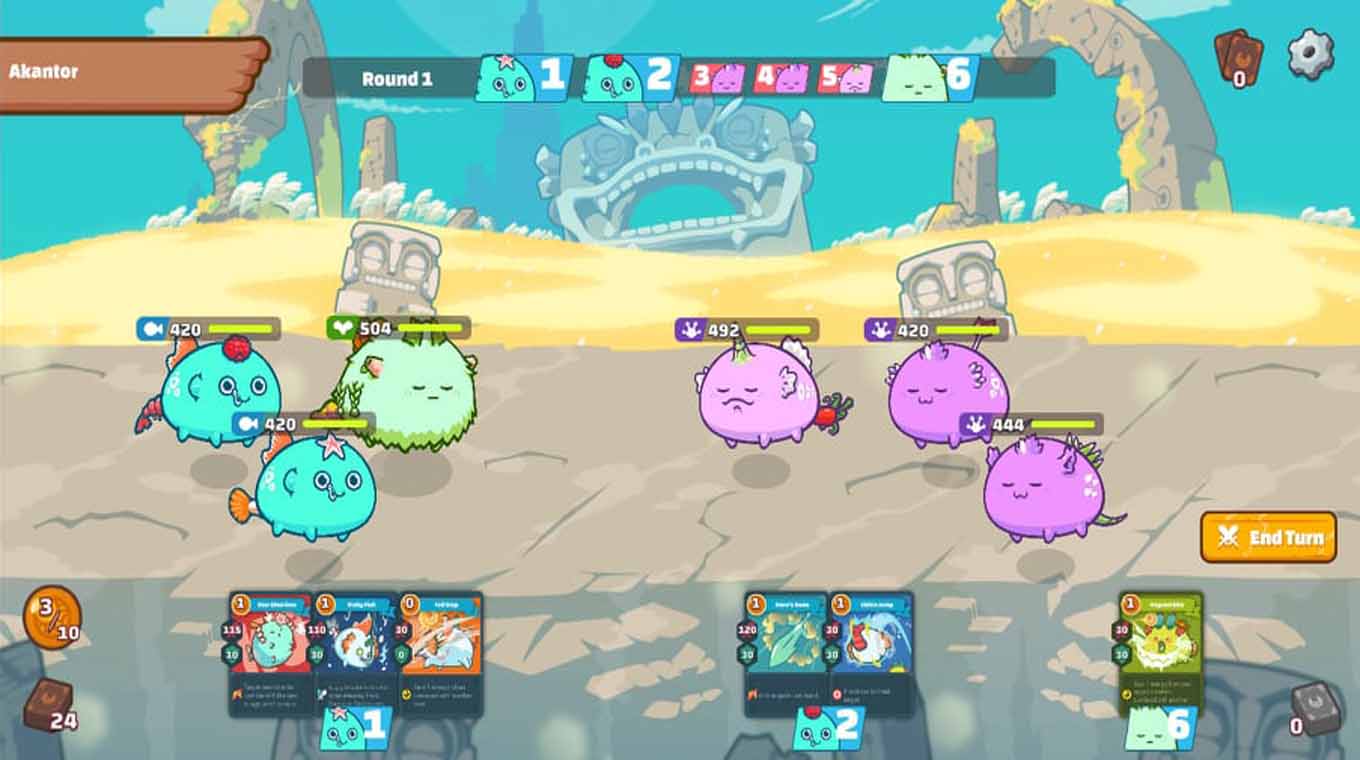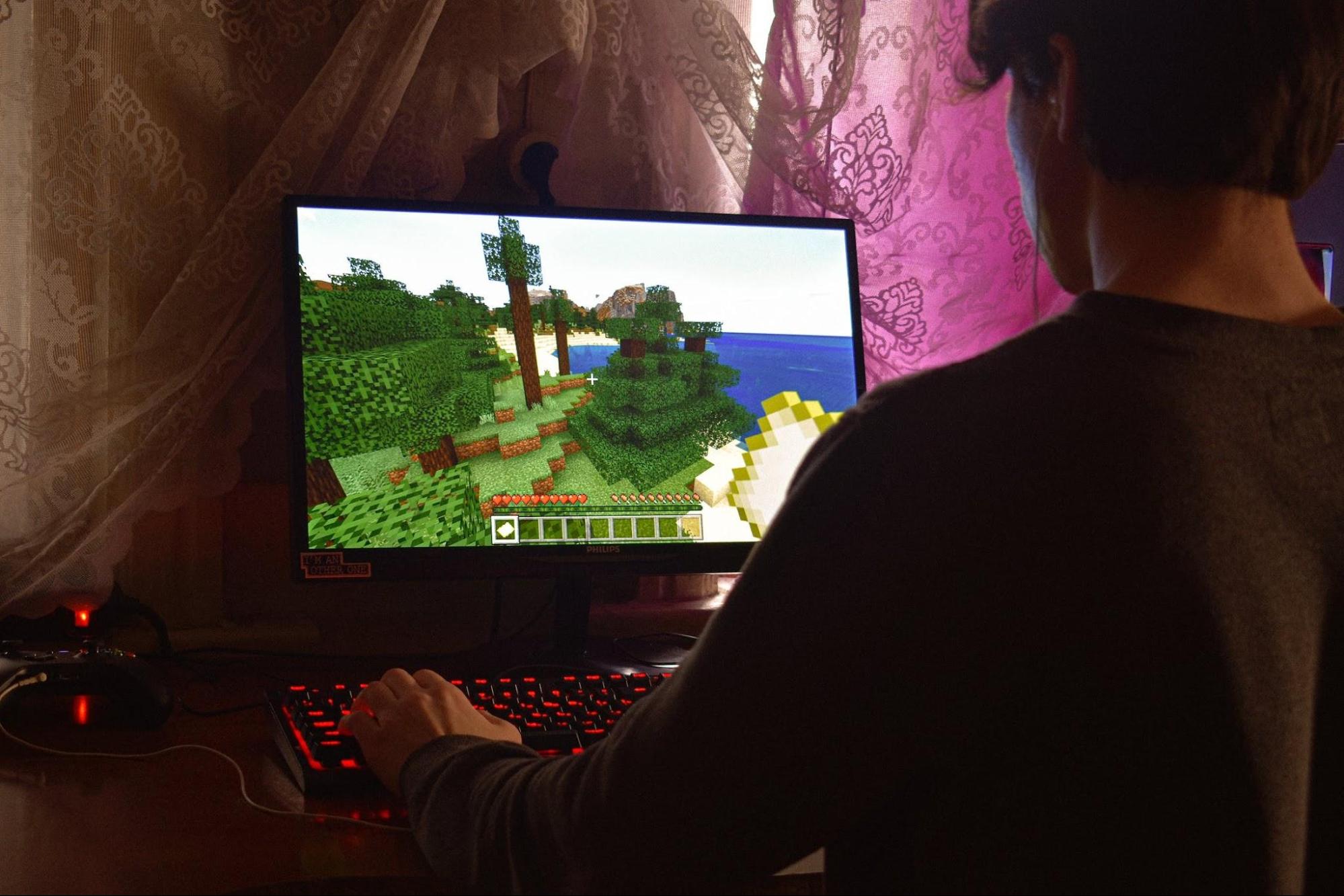The last installment of this series on narratives driving crypto is about play-to-earn (P2E), a narrative that crosses over into both the crypto world and the gaming world. Will traditional gaming embrace blockchain games? Will P2E create new revenue streams for people? How will that affect the gaming market? How will that affect your investments?
Ok, ok, stop rapid-firing questions at me, we’ll answer all of them in time. But first, what is play-to-earn anyway?
What is play-to-earn

Earning in-game rewards as an incentive to continue playing is not a new concept. It’s been around since the early 2010s with the rise of online and mobile free-to-play games and things like loot boxes, from which players could buy and get desirable in-game rewards. Part of good game-play retention comes from in-game mechanisms that create internal economic incentives for players to participate and continue participating.
In traditional, centralized games, in-game rewards are usually only useful within that single game. But with the rise of blockchain, NFTs, and tokens, in-game rewards can not only be transferable outside the game, they can also possess real-world value that can be cashed out for fiat money.
The crossover of tokenized in-game rewards with play-to-earn mechanics creates an incredible opportunity that benefits the game by incentivizing people to play, and it also benefits the player by providing something with real-world value.
One of the most popular examples of play-to-earn is the wildly successful Axie Infinity. In the game, you can battle Axie creatures (which are NFTs) and also earn tokens. Its market cap is more than $1.2 billion, and it has become so successful that people are even earning a side income playing and earning rewards.
Competing narratives

When it comes to the narratives driving crypto, P2E brings several — and they’re not all in agreement. Plus, there are different stories about the benefit or damage of P2E, depending on the industry and vantage point you’re viewing them from. Because this is a crypto blog, we’ll focus more on the crypto narrative than the gaming narrative, but keep in mind that in a large, conceptual sense, they’re both important.
Positive narrative
The P2E narrative that has so many people excited to both play and invest is one that promises to bring a concrete and real-life application to gaming which has been viewed, parents around the world would echo, as “a useless waste of time.” Adding a virtual economic element that also has external value in the physical economy will bring more new people into an already big and powerful market.
For players, the beauty in this narrative is a promise of creating a meaningful return for time spent playing video games. For investors, upping the stakes for how immersive and utilitarian gaming can be will provide lots of room for game developers to create successful games that will have good return on investment.
Negative narrative
There is, however, a less optimistic narrative that skeptics of both the gaming industry and crypto are spreading. This narrative says that, because a large swath of those who are being drawn into the gaming market for P2E are in developing countries, the incentivizing economic model is simply one more way for gaming companies to take advantage of players. The problem is especially decried for large gaming publishers like Ubisoft who, some people say, are out to squeeze money out of vulnerable populations.
Because anti-establishment sentiments are so attractive to many crypto enthusiasts, this could actually be among the influential narratives driving crypto when it comes to P2E. Since gaming is already such an established market, unlike much of the rest of the cryptosphere, there are a lot of centralized companies looking to get in the P2E market. The best case for diffusing this negative narrative is for truly decentralized blockchain games to provide P2E opportunities that actually benefit everyone involved.
Narratives today and in the future
Another aspect of the multiple narratives driving crypto with play-to-earn is a contrast of the current narrative and the narrative of the future. It’s true that most narratives driving crypto are future-looking and largely aspirational, but because the gaming industry is already so well established and play-to-earn is not entirely new, there is a current-day story that is being told and a story of the future.
P2E today
Alongside the P2E model that already exists in traditional, centralized gaming, there is a current phenomenon sweeping through the crypto world. As mentioned earlier, Axie Infinity is at the top of that list, along with Decentraland, The Sandbox, and others. The narrative is that NFTs will make in-game rewards potentially worth incredible amounts of money. It’s not an empty narrative either when a virtual plot of land in Decentraland was bought for $2.4 million. This narrative leans heavily on the importance of tokenization and monetizing virtual assets in the real world.
P2E in the future
The biggest, most overarching narrative for play-to-earn is the positive narrative we talked about earlier. The opportunity to transform gaming from just an entertainment medium to another viable piece of the virtual economy. We already have a gamification trend in the culture where non-game activities are made more engaging, competitive, and attractive by using game mechanics. It only makes sense for that attitude to work in the opposite direction by making gaming itself practical and useful. This narrative is hopeful for the future of the crypto ecosystem and its integration into the larger economy as a virtual extension of the global marketplace.
Investing in play-to-earn

We’re already seeing many large gaming publishers moving to make a place for themselves in the world of blockchain games and play-to-earn with NFTs, tokens, and other in-game rewards. They’re definitely moving to make themselves part of the P2E narrative, whichever one wins out. How you invest will depend on what your goal is and what narrative you want to position yourself for.
If you believe in decentralized gaming and think the crypto sector of P2E will beat out the traditional publishers trying to enter the space with centralized models, invest accordingly. If you just want to make plays where the money will be, look at all the major publishers that plan to integrate P2E mechanics either in existing or new games.
Perhaps you’re short on capital and you want to invest in the narratives driving crypto by participation. That’s easy; just start playing Axie Infinity, Splinterlands, Embersword, Chainmonsters, and any other blockchain P2E that catches your fancy. There are all kinds of blockchain games popping up these days, and you could spend your whole day at it – every day if you really wanted to.
There are also plays to be made by investing in crypto projects that are related to P2E. For example, the blockchain base layers in-game rewards run on, the tokens associated with certain games, DeFi protocols that crossover into GameFi, game developer DOAs and VC projects, and anything else in the crypto ecosystem that supports P2E infrastructure.
What narratives driving crypto will you invest in?
Throughout this series, we’ve talked about several of the large, overarching narratives driving crypto and how the stories that surround new ideas drive people either to get on board or back away. Since the beginning of Bitcoin, we’ve seen narratives sweep people into incredibly positive positions financially, technologically, and even socially when you consider the philosophy driving decentralization and crypto. There are macro narratives, industry narratives, and short-term narratives all telling the story of how crypto will change the world. How will you choose to invest your money, resources, and participation?
About the Author

Michael Hearne
About Decentral Publishing
Decentral Publishing is dedicated to producing content through our blog, eBooks, and docu-series to help our readers deepen their knowledge of cryptocurrency and related topics. Do you have a fresh perspective or any other topics worth discussing? Keep the conversation going with us online at: Facebook, Twitter, Instagram, and LinkedIn.


